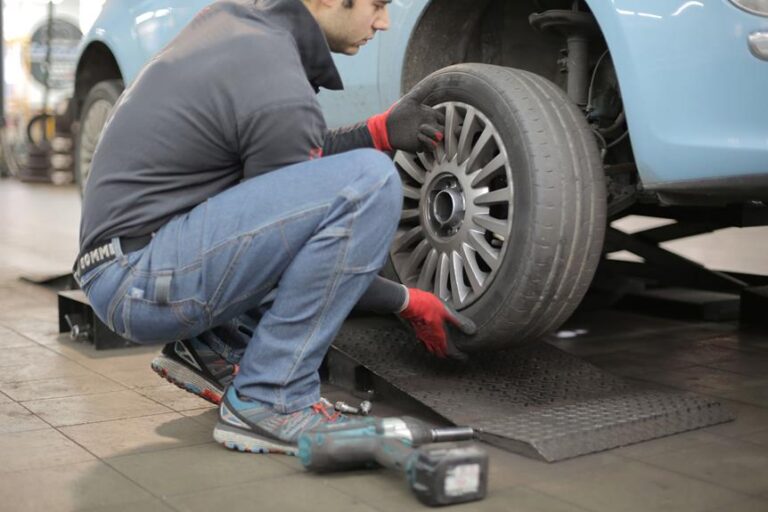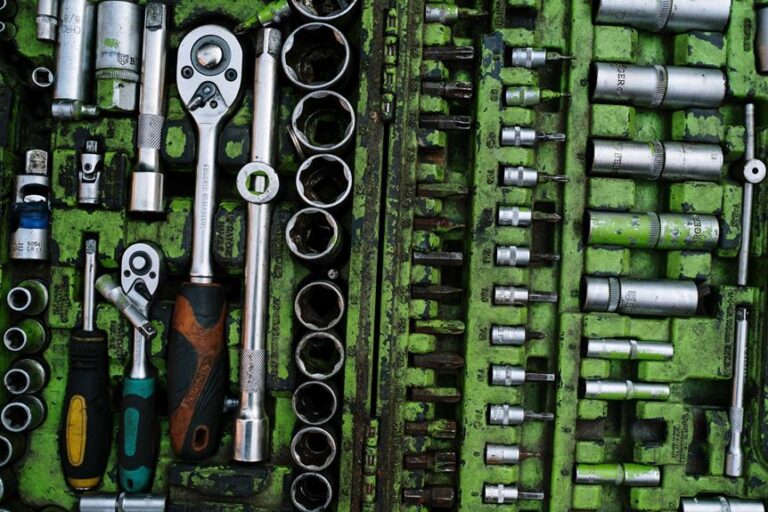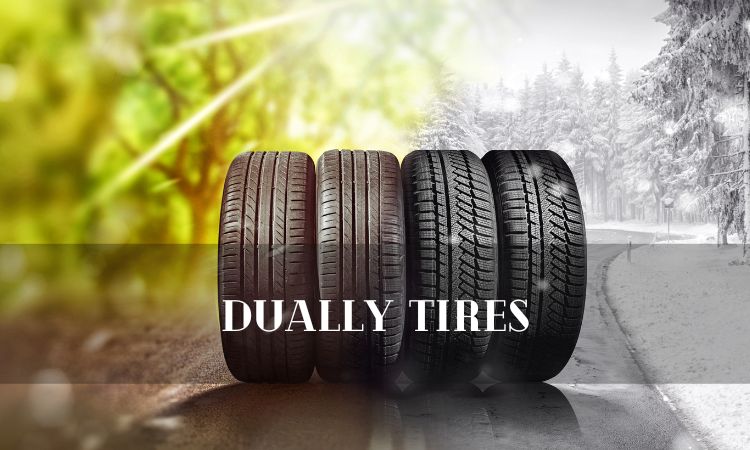Preventing Tire Blowouts: Tips for Safe Driving
In today's fast-paced world, ensuring our safety on the road is of paramount importance. One potential hazard that demands our attention is the tire blowout.
While it may be an uncomfortable reality, being prepared and equipped with the right knowledge can be our best defense. This article serves as a comprehensive guide, offering valuable tips and techniques for preventing tire blowouts and ensuring a safe driving experience.
From regular inspections to proper maintenance, we leave no stone unturned in our pursuit of keeping you informed and empowered on the road.
Key Takeaways
- Regular tire inspections and maintenance are crucial for preventing tire blowouts.
- Selecting high-quality tires and adhering to the recommendations provided by the tire manufacturer is essential for road safety.
- Avoiding overloading and excessive speeding can help prevent tire blowouts.
- Correct tire rotation and alignment are important for maintaining optimal performance and extending the lifespan of tires.
Regular Tire Inspections
Regular tire inspections are crucial for identifying potential tire issues such as tread wear, cracks, or punctures, which can help prevent tire blowouts and ensure safe driving.
Tire treadwear indicators are important tools to assess the condition of your tires. These indicators are small bars located within the tire grooves. When the tread wears down to the level of these bars, it is a sign that the tire needs to be replaced. By regularly checking these indicators, you can determine when it's time to invest in new tires, reducing the risk of a blowout caused by worn-out treads.
Tire repair and maintenance are equally important in preventing tire blowouts. Regularly inspecting your tires for any signs of damage, such as cracks or punctures, allows you to address these issues before they worsen. If you notice any small punctures, it is essential to have them repaired promptly by a professional. Ignoring these damages can lead to increased tire wear or even a tire blowout.
In addition to inspections, proper tire maintenance is crucial. This includes maintaining the correct tire pressure, as underinflated or overinflated tires can increase the risk of blowouts. Regularly rotating your tires helps ensure even wear and extends their lifespan. It is also important to align your tires regularly to prevent uneven wear patterns that can lead to blowouts.
Proper Tire Pressure Maintenance
Maintaining proper tire pressure is essential for preventing blowouts and ensuring safe driving. Adequate tire pressure not only improves fuel efficiency but also enhances vehicle handling and reduces the risk of accidents. Regular tire pressure monitoring is necessary to ensure that your tires are properly inflated.
To maintain optimal tire pressure, it is recommended to check the tire pressure at least once a month using a tire pressure gauge. This simple task can be done at home or at a gas station. The recommended tire pressure can be found in the vehicle owner's manual or on a decal located on the driver's side door jamb. It is important to note that tire pressure should be checked when the tires are cold, as heat from driving can cause the pressure to increase.
In addition to regular monitoring, following a tire maintenance checklist is crucial for preventing blowouts. This checklist should include inspecting the tires for any signs of damage, such as cuts, bulges, or excessive wear. It is also important to ensure that the tires are properly balanced and aligned. Regular rotation of tires can help extend their lifespan and maintain even wear.
Quality Tire Selection
To ensure optimal safety on the road, it is important to carefully select high-quality tires that meet the specific requirements of your vehicle. One of the key factors to consider when choosing tires is their tread depth. A tire's tread depth plays a crucial role in maintaining traction and grip on the road, especially in wet or snowy conditions. In fact, tire tread depth analysis is often used to determine if a tire is safe for continued use.
When selecting tires, it is essential to follow the recommendations provided by the tire manufacturer. These recommendations take into account factors such as the vehicle's weight, speed rating, and driving conditions. By adhering to these guidelines, you can ensure that the tires you choose are designed to handle the demands of your specific vehicle.
Additionally, high-quality tires not only improve safety but also enhance the overall driving experience. They provide better handling, increased fuel efficiency, and a smoother ride. Investing in top-notch tires is a wise decision that can pay off in the long run.
In conclusion, selecting high-quality tires that meet the specific requirements of your vehicle is crucial for optimal safety on the road. By considering factors such as tread depth and following the tire manufacturer's recommendations, you can ensure that you have the right tires for your vehicle.
Avoiding Overloading and Speeding
Adhering to recommended weight limits and avoiding excessive speeding are key practices for ensuring road safety and preventing overloading. When it comes to road safety, defensive driving techniques play a crucial role.
Defensive driving involves being aware of the actions of other drivers, anticipating potential hazards, and taking proactive measures to avoid accidents. By practicing defensive driving, drivers can reduce the risk of collisions and promote safer road conditions for themselves and others.
In addition to defensive driving, the impact of road conditions on tire blowouts cannot be ignored. Road conditions such as potholes, uneven surfaces, and debris can contribute to tire blowouts. Therefore, it is important for drivers to regularly inspect their tires for any signs of wear and tear, maintain proper tire pressure, and drive cautiously on roads that may pose a higher risk of tire blowouts.
By following these practices and being mindful of the importance of defensive driving techniques, drivers can significantly reduce the chances of overloading and speeding-related accidents. This not only ensures their own safety but also contributes to a safer and more enjoyable driving experience for everyone on the road.
Correct Tire Rotation and Alignment
The correct tire rotation and alignment of your vehicle is essential for maintaining optimal performance and extending the lifespan of your tires. When tires are not properly rotated and aligned, it can lead to uneven tire wear patterns, affecting the overall stability, handling, and safety of your vehicle.
Tire wear patterns can provide valuable insight into the condition of your tires and the performance of your vehicle. For example, if you notice excessive wear on the edges of your tires, it may indicate underinflation or poor alignment. On the other hand, if you observe excessive wear in the center of your tires, it may suggest overinflation or aggressive driving habits.
To prevent uneven tire wear, it is important to follow the recommended tire rotation patterns provided by your vehicle's manufacturer. Regular rotation helps to evenly distribute the weight and wear on your tires, ensuring a longer lifespan and better performance.
In addition to rotation, tire balancing techniques can also contribute to the longevity of your tires. Balancing involves equalizing the weight distribution of your tires and wheels to minimize vibrations and improve overall stability. This process should be done whenever you install new tires or if you notice any vibrations while driving.
Frequently Asked Questions
What Should I Do if I Experience a Tire Blowout While Driving?
If you experience a tire blowout while driving, it is important to remain calm and follow a few key steps. These steps include maintaining control of the vehicle, gradually slowing down, and safely pulling over to the side of the road.
Can Tire Blowouts Be Prevented Completely, or Are They Inevitable?
Tire blowouts can be prevented to a certain extent through regular tire maintenance, but external factors such as road conditions and hazards can also contribute to their occurrence.
How Often Should I Check My Tire Pressure to Ensure It Remains at the Recommended Level?
To ensure tire pressure remains at recommended levels, it is advisable to check it regularly. The checking frequency can vary depending on driving conditions, but a general guideline is to check tire pressure at least once a month.
Are There Any Specific Signs or Indicators That Could Help Me Identify if My Tires Are at Risk of Blowing Out?
Signs of tire wear and proper maintenance of tire pressure are crucial for preventing blowouts. Regularly check for worn tread, bulges, or cracks, and maintain recommended tire pressure to minimize the risk of tire blowouts while driving.
Can I Still Drive on a Tire That Has Low Pressure, or Should I Immediately Replace It?
When driving with low tire pressure, it is not recommended to continue driving on the tire. Low pressure can lead to reduced traction, poor handling, and increased risk of a blowout. It is best to immediately replace the tire to ensure safety on the road.
Conclusion
In conclusion, by following these tips for preventing tire blowouts, drivers can ensure a safer and more reliable driving experience.
Regular inspections, proper tire pressure maintenance, and quality tire selection are all essential practices to adopt.
Avoiding overloading and speeding, as well as correct tire rotation and alignment, are also important measures to implement.
By implementing these measures, drivers can minimize the risk of tire blowouts and enhance their overall road safety.
Remember, a little extra care can go a long way in preventing unexpected mishaps on the road.







